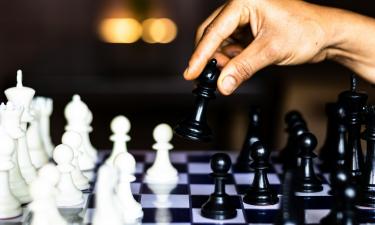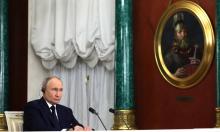New Russian world record - in armaments exports
There was nothing new or particular when General Joko Santoso, deputy commander-in-chief of Indonesia's ground troops, spent 15 minutes looking fascinated at a new unique Russian anti-tank guided missile called Kornet. This took place at a recent large international exhibition of weapons and military equipment held in Malaysia - DSA-2004. Russian weapons in South East Asia and throughout the entire Asia-Pacific region traditionally attract increased attention and enjoy high demand. And not only there, but also in many other regions of the world.
And this has been happening for many years. "Today Russia is firmly among the five top world exporters of military hardware," Vladimir Putin told journalists at a meeting on March 1. The president is convinced that "the main task in this area is to consolidate the positions achieved and exploit the success".
And today, it seems we are on the threshold of a sensation: Russia is poised to become the leader in world arms exports, drawing confidently ahead of its main and permanent rival - the United States. Properly speaking, if the information supplied by the Stockholm International Peace Research Institute (SIPRI) is anything to go by, Russia moved to first place as early as 2002.
Reasons for such an optimistic forecast may be several.
To begin with, arms exports, alongside with energy exports, are a priority of the national economy, whose earnings make a comfortable addition to Russia's budget coffers.
Considering that Vladimir Putin's presidency is seen in society as a guarantee of political stability and economic growth, and a general strengthening of Russian statehood is an obvious fact, then the president's recommendation "to reinforce the success" will take only a short space of time to implement.
Financially, Russian receipts from the arms business by themselves inspire only optimism. Of course, this is not 20 billion dollars a year - a sum to which the Soviet Union supplied its weapons to other countries. Mind you, supplied, because only one-fifth of these 20 billion dollars were recovered as live money. The rest would either be delivered for ideological considerations on debt, which the USSR did not much expect to get repaid, or in exchange for commodity supplies.
Today the actual annual volume of military-technical cooperation between Russia and other nations is approaching 5 billion dollars - all of them live cash. That is to say, Russia has in fact overtaken the USSR. Or to be more precise, according to SIPRI estimates, Russia's record is 4.979 billion dollars, or 417 million dollars ahead of the US.
But there are two more indicators which by themselves point to the capabilities of the Russian armaments business. First is the existing "backlog of outstanding orders". Specialists from the Russian agency for conventional weapons evaluate it at roughly 12 billion dollars. The second figure concerns potential sales volumes. SIPRI analysts say that within the next few years Russia may look to a realistic 20 billion dollars' worth of orders.
What sales are meant?
Today the export possibilities of one or another model of military equipment or weapons depend on its modernisation potentialities. Naturally, renovation does not imply a new sample, but sometimes improves its characteristics by one order of magnitude.
Present-day combat materiel - tanks, missile launchers, anti-aircraft and artillery systems - let alone planes and ships - are renewed rarely: once in 13 to 15 years on average. Even well-to-do nations cannot afford to buy ever new models of equipment at short intervals of time. But weapons upgrading enables foreign customers to greatly improve the combat capabilities of the earlier acquired armaments by spending one-fourth to one-sixth of the sum required to purchase new models.
Ability to upgrade one's products is especially valuable nowadays for armour manufacturers, because the number of orders, especially for new tanks, has lately decreased substantially.
So Russian policy in the export of arms, most of which are traditionally armour, looks as follows: "Far from presenting any new samples, we would do better by offering a more detailed programme for modernisation of what we have supplied before," said Alexander Burutin, an adviser to the Russian president, at the closing of the Malaysian exhibition.
In principle practically all basic Russian combat tanks can serve as examples of the art of upgrading. For example, the artillery system of the main combat medium tank T-72 of 1971 vintage, sold abroad in more than 5,000 units, can now be used for firing laser-guided anti-tank missiles which left such a deep impression on the Indonesian general in the Russian pavilion.
Subscribe to Pravda.Ru Telegram channel, Facebook, RSS!





